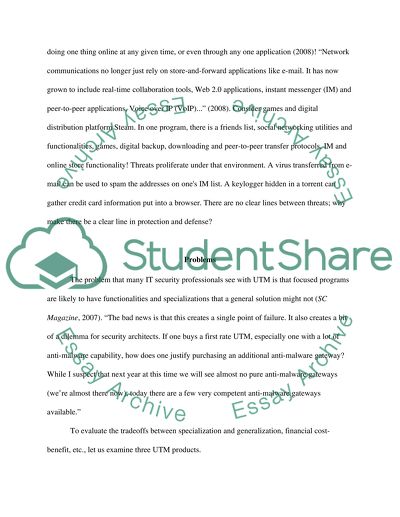Cite this document
(“Unified Threat Management (UTM) Essay Example | Topics and Well Written Essays - 3500 words”, n.d.)
Retrieved from https://studentshare.org/miscellaneous/1574896-unified-threat-management-utm
Retrieved from https://studentshare.org/miscellaneous/1574896-unified-threat-management-utm
(Unified Threat Management (UTM) Essay Example | Topics and Well Written Essays - 3500 Words)
https://studentshare.org/miscellaneous/1574896-unified-threat-management-utm.
https://studentshare.org/miscellaneous/1574896-unified-threat-management-utm.
“Unified Threat Management (UTM) Essay Example | Topics and Well Written Essays - 3500 Words”, n.d. https://studentshare.org/miscellaneous/1574896-unified-threat-management-utm.


